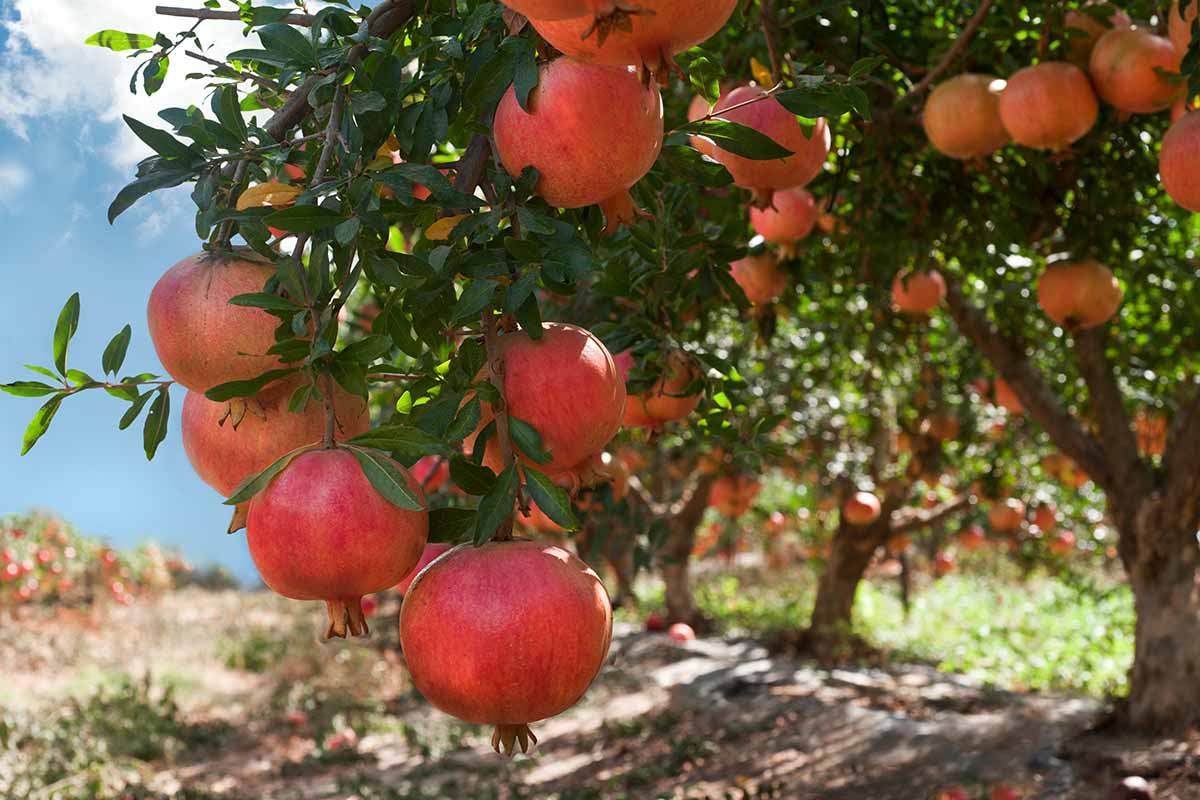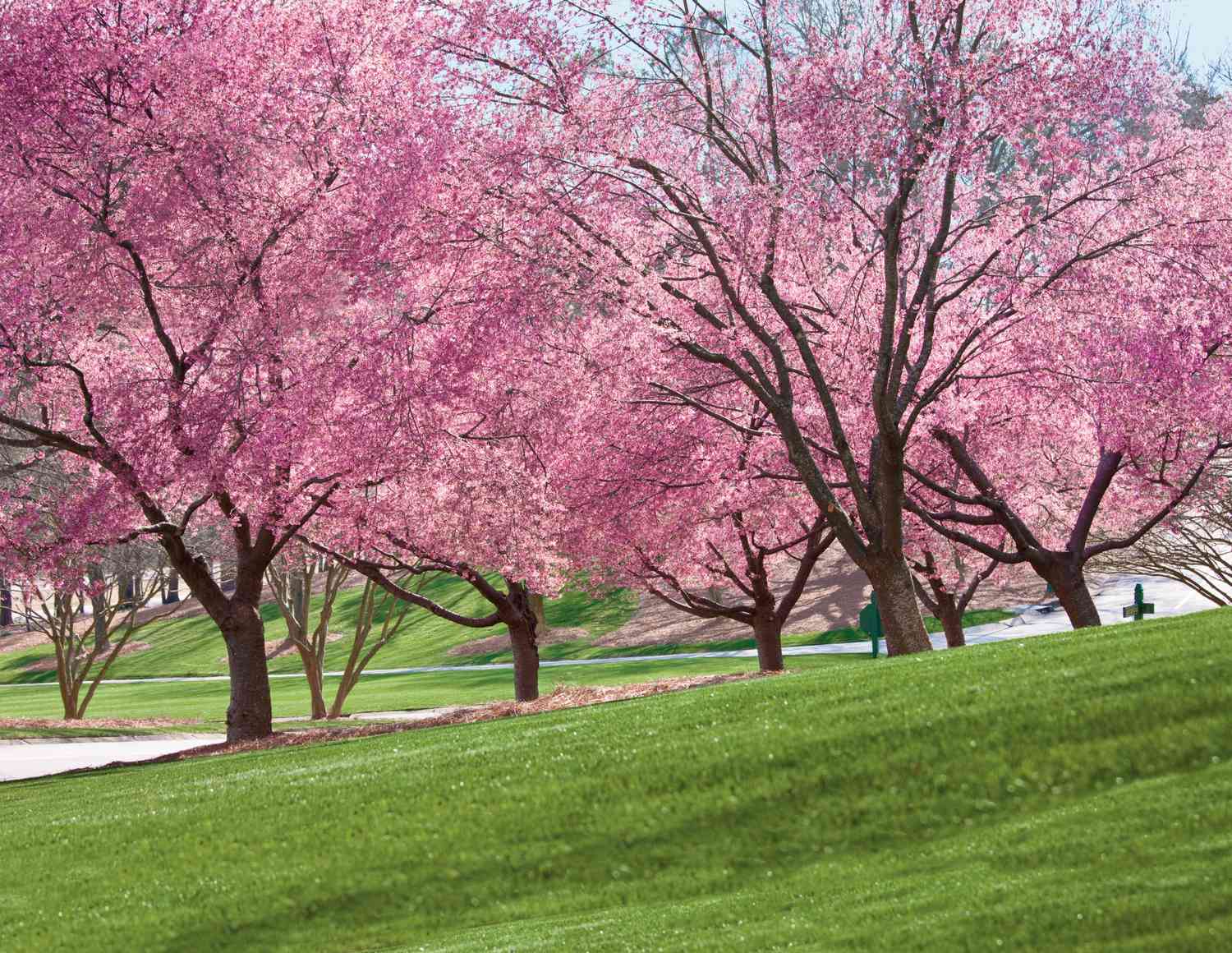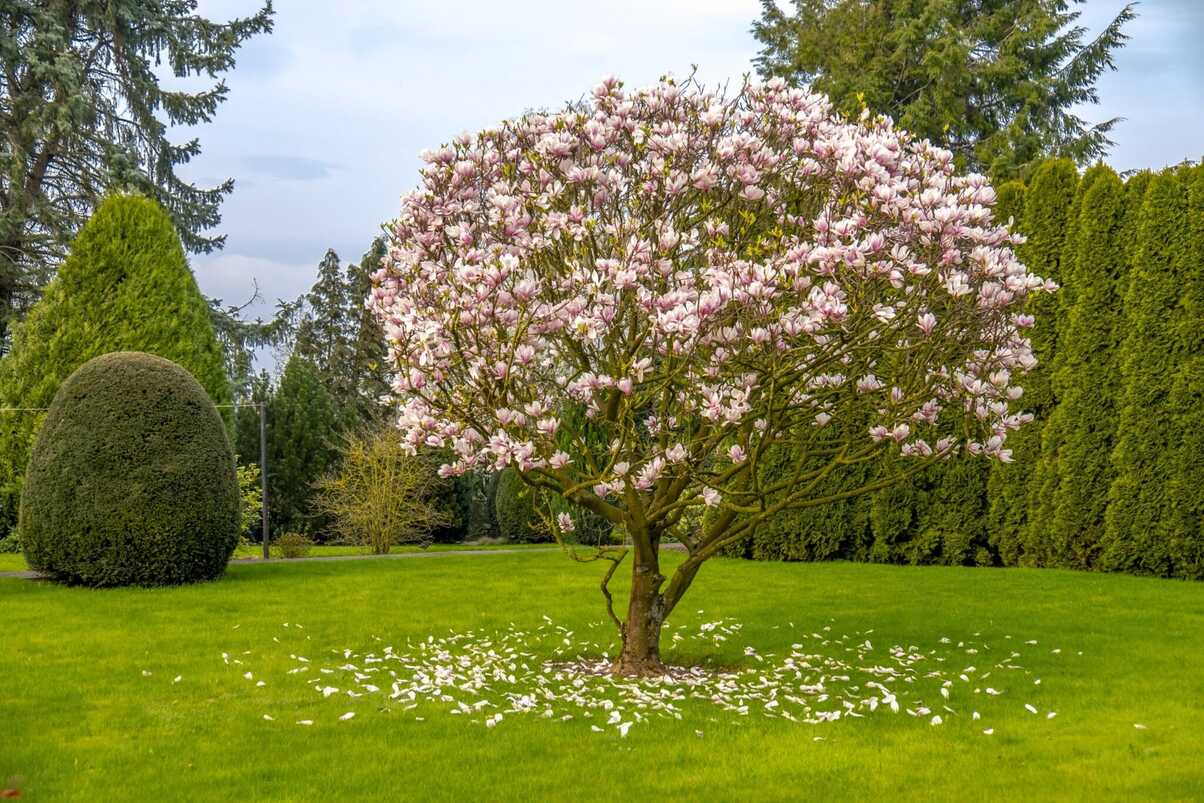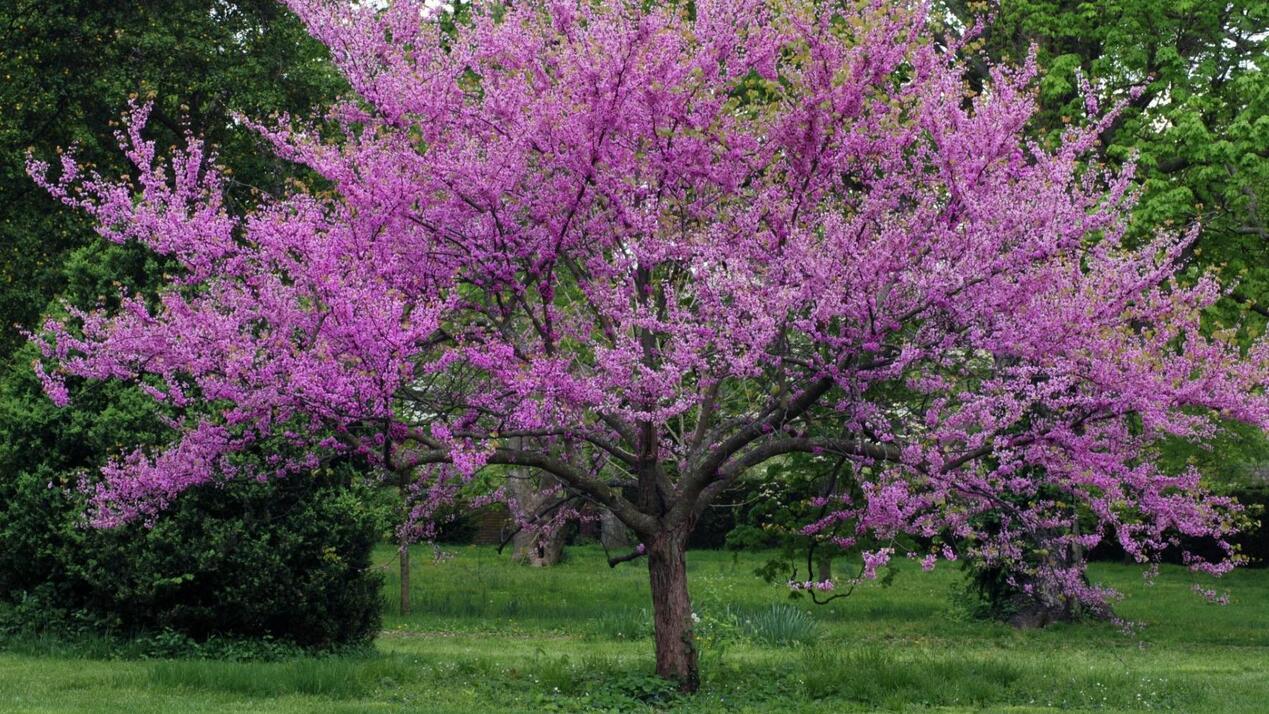Home>Gardening Techniques>Plant Care>How Tall Do Pomegranate Trees Grow


Plant Care
How Tall Do Pomegranate Trees Grow
Modified: February 6, 2024
Learn all about pomegranate tree plant care, including how tall these trees grow and essential tips for nurturing them to thrive.
(Many of the links in this article redirect to a specific reviewed product. Your purchase of these products through affiliate links helps to generate commission for Chicagolandgardening.com, at no extra cost. Learn more)
Table of Contents
Introduction
Welcome to the fascinating world of pomegranate trees! These beautiful and versatile fruit-bearing plants have been cherished for centuries for their delicious ruby-red arils and vibrant flowers. If you’re considering growing a pomegranate tree in your garden or are simply curious about them, one important aspect to understand is their height.
Pomegranate trees, scientifically known as Punica granatum, can reach impressive heights, creating a striking presence in any landscape. Understanding the factors that influence the height of these trees and how to manage their growth can help you make informed decisions when it comes to planting, nurturing, and pruning them.
In this article, we will explore the various factors that contribute to the height of pomegranate trees and discuss the ideal conditions for their growth. We will also delve into the techniques you can use to control the height of your pomegranate trees through proper pruning. So, let’s dive in and discover how tall pomegranate trees can grow!
Height of Pomegranate Trees
Pomegranate trees can vary in height depending on the variety and growing conditions. On average, these trees can reach a height of 12 to 20 feet (3.6 to 6 meters) at maturity. However, some varieties, such as the ‘Wonderful’ pomegranate, have the potential to grow even taller, reaching heights of 30 feet (9 meters) or more.
It’s important to note that the height of a pomegranate tree is influenced by several factors, including genetics, soil fertility, climate, and available space for root development. Additionally, certain cultural practices, such as pruning and training, can also affect the tree’s overall height.
When considering the height of a pomegranate tree, it’s essential to understand that the size of the tree does not necessarily determine its fruit-bearing capacity. Even smaller varieties can produce an abundance of delicious pomegranates if provided with the right care and growing conditions.
Furthermore, pomegranate trees have a tendency to develop multiple trunks or suckers, which can lead to a bushier appearance and potentially increase their overall height. It’s important to monitor and manage these suckers to maintain the desired shape and height of the tree.
Overall, pomegranate trees are known for their moderate size, making them suitable for both large and small gardens. Their height adds a vertical element to the landscape, creating visual interest and enhancing the overall beauty of the outdoor space.
Factors Affecting the Height of Pomegranate Trees
The height of pomegranate trees is influenced by various factors, both intrinsic and extrinsic. Understanding these factors can help you optimize the growth of your pomegranate trees and ensure they reach their full potential. Let’s explore some of the key factors affecting the height of pomegranate trees:
- Variety: Different pomegranate varieties have varying growth habits and potential heights. Some varieties are naturally compact and stay relatively short, while others have a more vigorous growth habit and can attain greater heights. When selecting a pomegranate variety, consider its growth characteristics to ensure it aligns with your desired height requirements.
- Soil Fertility: The fertility and quality of the soil can significantly impact the height of pomegranate trees. These trees prefer well-draining soil rich in organic matter. Adequate soil fertility provides the necessary nutrients for healthy growth and development, promoting optimal height attainment. Conduct a soil test to assess its nutrient levels and make amendments as necessary.
- Climate: Pomegranate trees thrive in Mediterranean-like climates with hot, dry summers and mild winters. They require a certain number of chilling hours during the winter to stimulate proper growth. The climate plays a crucial role in the height development of pomegranate trees, as it affects their overall health and vigor.
- Pruning: Pruning techniques and practices can directly impact the height of pomegranate trees. Regular pruning helps maintain the desired height and shape, encourages better airflow and light penetration, and promotes fruit production. Proper pruning during the dormant season allows you to control the height of the tree and prevent it from becoming too tall or unruly.
- Watering and Irrigation: Adequate water supply is essential for the healthy growth of pomegranate trees. Insufficient watering can stunt their growth and restrain their height potential. On the other hand, overwatering can lead to root rot and other problems. Strike a balance by providing regular deep watering sessions and ensuring proper drainage to support optimal height development.
By considering these factors and providing optimal growing conditions, you can help your pomegranate trees reach their maximum height potential, creating a beautiful and productive addition to your garden.
Ideal Growing Conditions for Pomegranate Trees
Pomegranate trees thrive in specific growing conditions that enable them to reach their full potential in terms of height, health, and fruit production. If you want to ensure the success of your pomegranate trees, it’s crucial to provide them with the following ideal growing conditions:
- Sunlight: Pomegranate trees require full sunlight to flourish. They should receive at least 6 to 8 hours of direct sunlight each day. Position the trees in a location where they are not shaded by buildings or other large plants, allowing them to soak up the sun’s energy and promote healthy growth.
- Soil: Well-draining soil is essential for pomegranate trees. They thrive in loamy or sandy soil that is rich in organic matter. Avoid heavy clay soil as it can impede drainage and cause waterlogged conditions detrimental to their growth. Conduct a soil test to assess its pH level and make adjustments if necessary to maintain an ideal range of 5.5 to 7.0.
- Water: While pomegranate trees are drought-tolerant once established, they still require regular watering during their initial establishment phase. Provide deep waterings every 7 to 10 days, allowing the soil to dry out slightly between waterings. Be cautious not to overwater, as excessive moisture can lead to root rot and other issues.
- Climate: Pomegranate trees thrive in Mediterranean-like climates characterized by hot, dry summers and mild winters. They require a minimum of 100 to 200 chilling hours (temperatures below 45 degrees Fahrenheit or 7 degrees Celsius) during the dormant season to set fruit. Avoid planting them in regions with frost-prone winters or extremely humid conditions.
- Fertilizer: Pomegranate trees benefit from regular applications of balanced fertilizer to promote healthy growth. Apply a well-balanced granular fertilizer in early spring, just before new growth emerges. Additionally, supplement with organic matter, such as compost or well-rotted manure, to enhance soil fertility and support overall tree health.
- Space: Pomegranate trees require sufficient space for their roots to spread and for optimal growth. Plant them at least 12 to 15 feet (3.6 to 4.5 meters) apart to ensure they have enough room to grow without overcrowding or competing for resources.
By creating these ideal growing conditions, you can provide the foundation for your pomegranate trees to reach their maximum height, thrive, and produce an abundance of delicious fruits.
Pruning Techniques to Control Height
Proper pruning is a key technique to control the height of pomegranate trees and maintain their desired shape and size. By implementing the right pruning practices, you can effectively manage their growth and prevent them from becoming too tall or unruly. Here are some pruning techniques to consider:
- Establish a Central Leader: When the pomegranate tree is young, select a strong, upright shoot as the central leader. This leader will become the main trunk of the tree, providing structure and stability. Prune away any competing shoots or branches that may hinder the central leader’s growth.
- Remove Suckers and Watersprouts: Pomegranate trees tend to produce suckers or watersprouts, which are rapidly growing shoots that emerge from the base of the tree or along the trunk. These can contribute to a taller and bushier appearance. Regularly remove these suckers to maintain a cleaner, more manageable tree shape.
- Thinning Out: To control the height and density of the tree, you can selectively remove some branches throughout the canopy. Thin out crowded branches to improve airflow and light penetration, which promotes better overall tree health and reduces the risk of disease or pests.
- Heading Back: If your pomegranate tree has grown too tall, you can use heading back cuts to reduce its height. Locate the branches that are causing excessive height and prune them back to a desirable height or lateral branch. Make the cut about a quarter inch above a bud or lateral branch, angled away from the branch to encourage proper healing.
- Renewal Pruning: Over time, older branches may become less productive and hinder the tree’s overall growth. To revitalize the tree and control its height, perform renewal pruning. Identify older, unproductive branches and remove them at their base using clean pruning tools, promoting new growth and rejuvenation.
- Timing: Prune pomegranate trees during late winter or early spring when they are dormant. This allows the tree to recover from pruning wounds before the growing season begins. Avoid pruning later in the season as it may promote excessive vegetative growth, impacting the overall height control.
Remember to always use clean and sharp pruning tools to ensure smooth and precise cuts, reducing the risk of disease transmission. Observe the natural shape and growth habits of your pomegranate tree, and prune accordingly to maintain its height and appearance.
Conclusion
Pomegranate trees are remarkable additions to any garden, with their striking appearance, delicious fruits, and potential for height. While they can reach impressive heights, it’s important to understand the factors that influence their growth and how to manage their height effectively.
Factors such as variety, soil fertility, climate, pruning techniques, and proper care all contribute to the height of pomegranate trees. By selecting the right variety, providing optimal growing conditions, and implementing appropriate pruning practices, you can control the height of your pomegranate trees and maintain their desired shape and size.
Understanding the ideal growing conditions for pomegranate trees, such as full sunlight, well-draining soil, sufficient water, suitable climate, and proper fertilization, will ensure their healthy growth and maximize their height potential.
Pruning is a crucial aspect of height management for pomegranate trees. By establishing a central leader, removing suckers and watersprouts, thinning out branches, heading back tall shoots, and performing renewal pruning, you can control the tree’s height and maintain an attractive and manageable shape.
Remember, regular maintenance, such as watering, fertilizing, and monitoring for pests and diseases, is also vital for the overall health and height control of pomegranate trees.
By considering all these factors and providing proper care, you can enjoy the beauty of pomegranate trees at a height that fits your space while reaping the rewards of their delightful fruits.










